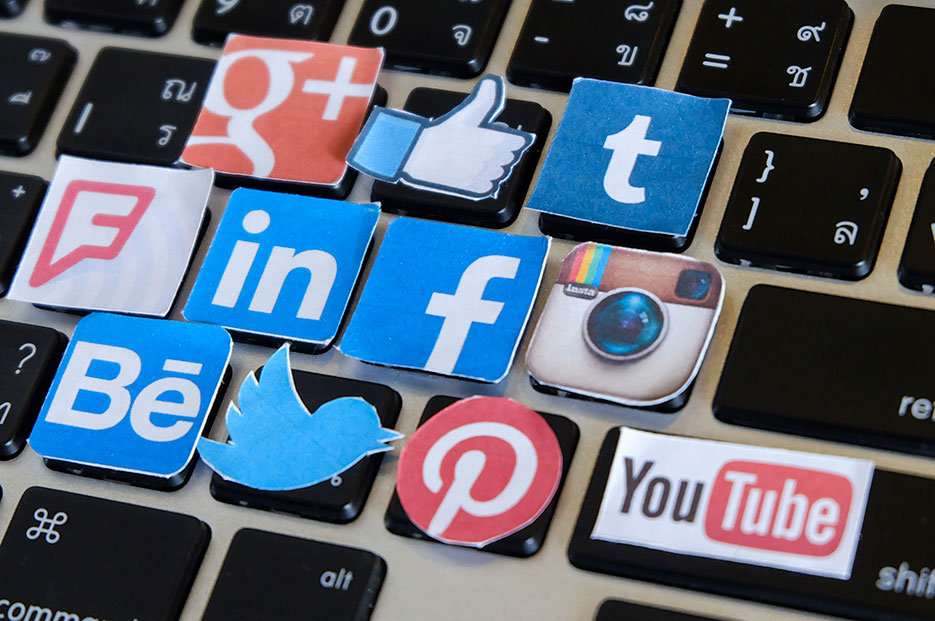Social media has become an integral part of modern communication, shaping the way individuals and businesses interact online. With multiple platforms available, each catering to different audiences and content styles, understanding their unique features and best practices can help you make the most of your online presence. This guide explores the most popular social media platforms, their user demographics, security concerns, and how businesses can effectively utilize them.
Jump to: Facebook • Instagram • Twitter • Pinterest • YouTube • LinkedIn • TikTok
Facebook – Share Anything (and Everything)
Facebook, originally created in 2004 as a platform to rate Harvard students’ appearances, has since evolved into a global social media giant. Today, users range from businesses and celebrities to pets and even the deceased. Facebook offers various features, including Marketplace, Events, News, Groups, Messenger, Friends Nearby, and Dating. Users share content such as text, videos, pictures, and website articles.
Setting Up a Facebook Account
Users can choose between a public profile, where posts are visible to anyone, or a private profile, where only approved friends can see shared content. If you enjoy sharing every aspect of your life, Facebook is the platform to do so—whether it’s selfies, job promotions, or family dinners. However, remember that even private posts can be shared beyond your network, and Facebook retains ownership rights over uploaded content.
In 2016, Facebook expanded its Like button to include reactions such as Love, Haha, Wow, Sad, and Angry. In 2020, the “Care” reaction was introduced in response to the COVID-19 pandemic. While Facebook is a great place to connect with family and friends, it’s also a space where personal agendas are frequently pushed.
Check out our recent blog post on a newer Facebook scam to stay informed!
Security Concerns for Facebook Users
Facebook has long been scrutinized for tracking user activity and collecting data. If you’re logged into Facebook, the platform monitors the websites you visit. Regularly updating your privacy settings is crucial, as automatic updates may alter your data-sharing preferences. The first thing you should do is make sure your friend list is set to only show to your friends so hackers do not impersonate you to your friends.
Additionally, Facebook is home to shady pages selling questionable content, and bots or scammers may attempt to contact you. Staying vigilant is key.
Facebook’s User Demographics
Younger users (under 35) are shifting to platforms like Instagram and TikTok, leaving Facebook with an older user base.
Business Use of Facebook
Facebook is ideal for posting brand updates and event promotions. If your business has an upcoming sale, Facebook is a great place to advertise it.
Instagram – Look at Me
Instagram is a free photo and video-sharing app available on iOS, Android, and Windows devices. Unlike its website version, posting on Instagram requires the mobile app. Users share pictures, videos, and live streams, often accompanied by hashtags to categorize content (e.g., #dogsofinstagram, #michigan, #outdoorlife).
Using Instagram
Like other platforms, users follow each other to see shared content. Private accounts restrict access to approved followers, though screenshots can still circulate your posts beyond your intended audience.
Instagram allows integration with Facebook, enabling cross-platform posting.
Security Concerns
Public Instagram accounts may receive unwanted messages and comments. Adjusting privacy settings can help minimize this.
Instagram’s User Demographics
Instagram is popular among users under 40, with influencers often promoting products and services. Businesses increasingly leverage Instagram Live for engagement.
Business Use of Instagram
If your business is visually oriented, Instagram is a powerful tool. Text takes a backseat to high-quality imagery and videos.
X (Formerly Twitter) – Make a Statement
Twitter is a fast-paced platform where users share text-based updates, images, and videos. It attracts businesses, individuals, and a fair share of internet trolls.
Using Twitter
Users follow accounts for updates and interact through comments, likes, and retweets. Twitter’s direct message feature allows private conversations.
Security Concerns
Scammers, particularly in cryptocurrency schemes, are prevalent. Be cautious when engaging with unfamiliar accounts.
Twitter’s User Demographics
Twitter is popular among millennials, favoring quick, concise content over lengthy posts.
Business Use of Twitter
Businesses use Twitter for real-time updates, industry discussions, and customer engagement. While Facebook is better for event promotion, Twitter can serve as a secondary platform for sharing event links.
Pinterest – Here’s What I Design
Pinterest allows users to create visual boards by “pinning” images and articles. It’s a hub for craft ideas, recipes, fashion inspiration, and party planning.
Using Pinterest
Users follow accounts, comment on posts, and re-pin content. Hashtags help categorize pins.
Security Concerns
Aside from general online scams, Pinterest has minimal security risks.
Pinterest’s User Demographics
Pinterest is especially popular among women, particularly teens and millennials.
Business Use of Pinterest
Pinterest is highly visual. Businesses should focus on posting engaging images rather than text-heavy content. For example, a bath remodeling company should showcase completed projects instead of posting lengthy articles.
YouTube – Watch Me
YouTube is a video-sharing platform with diverse content, from DIY tutorials to entertainment. Businesses can host channels or advertise through video ads.
Using YouTube
Users can follow channels, comment on videos, and engage via YouTube Live. Parents should be aware that YouTube’s suggested videos may not always be appropriate for children.
Security Concerns Using Youtube
Misinformation and inappropriate content can sometimes appear in recommendations. YouTube Kids offers a more controlled experience for children.
YouTube’s User Demographics
Teenagers and millennials dominate YouTube’s audience.
Business Use of YouTube
Businesses can upload tutorials, product showcases, and behind-the-scenes content to engage their audience.
LinkedIn – A Networking Event
LinkedIn is a professional networking platform used for job searching, industry news, and business connections.
Using LinkedIn
Users create professional profiles, connect with colleagues, and engage with industry-related content. Employers post job listings, and professionals showcase career achievements.
Security Concerns
Users seeking new job opportunities should be aware that their employers can see profile changes, which may affect job security.
LinkedIn’s User Demographics
LinkedIn primarily caters to professionals and job seekers.
Business Use of LinkedIn
Businesses use LinkedIn for hiring, networking, and industry thought leadership. Unlike other platforms, LinkedIn is not ideal for casual content.
TikTok – 15 Seconds of Fame
TikTok is a short-form video platform featuring quick, engaging content. Originally focused on music videos, TikTok now covers a wide range of topics, from humor to celebrity content.
Using TikTok
Videos are tailored to user interests through an AI-driven feed. Hashtags are commonly used for discoverability.
Security Concerns
TikTok’s young user base makes parental supervision essential. The platform’s algorithm can also lead users into content rabbit holes.
TikTok’s User Demographics
TikTok is most popular among users aged 16 to 24.
Business Use of TikTok
Brands leverage TikTok through influencer marketing and viral content strategies.
Conclusion
If you have children, monitor their social media usage closely. Regardless of the platform, staying informed about security risks and privacy settings is crucial. Social media can be a powerful tool for both individuals and businesses, but awareness is key to safe and effective engagement.






